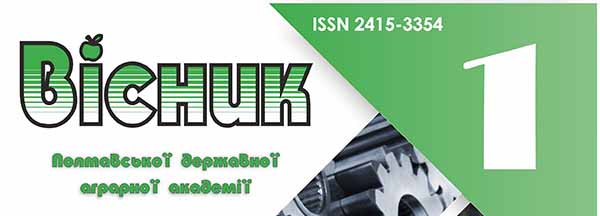INTERDEPENDENCE OF WOOL LENGTH WITH PRODUCTIVITY INDICATORS OF TAVRIA TYPE SHEEP, ASKANIA FINE-FLEECE BREED
DOI:
https://doi.org/10.31210/visnyk2021.04.21Keywords:
fine fleece, wool length, correlation, Tavria sheep type, physical and mechanical properties of woolAbstract
For thousands years, sheep breeding as a uniquely important branch of productive livestock farming, has served and is serving greatly to people at present. There have been no least doubts in the expediency and importance of breeding sheep that satisfy human requirements in such indispensable products as wool, sheepskin, lambskin, and mutton. The work is aimed at finding correlation links between wool length and the main productivity indicators in different sex and age groups of Tavria type sheep, Askania fine-fleece breed in order to use them in breeding and pedigree work. According to the purpose of the work, the following tasks were set: to form experimental groups of sheep, analyze qualitative indicators of wool and calculations of correlation relations of wool length with the main indicators of wool and meat productivity. Wool length indicators of the experimental animals varied within 9.6–14.1 cm regarding sex and age groups. The highest fleece indicators were observed in female lambs and amounted to 14.1 cm. As compared to shearlings, the difference made only 0.2 cm or 1.4 %. Somewhat higher difference indicators were found between female lambs and breeding rams – 1.7 cm or 12.1 % and ewes – 4.5 cm or 31.9 %. The obtained results in live weight of all the experimental stock show that with the age, the live weight indicators appropriately increase. For example, breeding rams had the highest live weight indicators, which amounted to 114.68 kg on the average; the difference between them and ram-lambs made 39.0 kg or 34.0 %. The difference in live weight of ewes and female lambs was considerably less and amounted to 2.9 kg or 5.0 %. It has been established that the output of washed filament in the experimental groups varied within 51.66–63.24 %. If grown-up stock was compared with young animals, it has been found that the advantage of breeding rams over shearlings amounted to 7.61 % and ewes over female lambs – 7.14 %. Fleece fineness of the experimental herd fluctuated from 20.68 to 23.12 mcm or it was within 64-60 quality. Coarse wool with the quality of 60 was found in breeding rams; the fleece of ewes, shearlings, and female lambs was of quality 64. The estimated fleece density of the experimental stock fluctuated within 3.28–3.84 points, that is, it was characterized from satisfactory to thick. It has been established that such indicators as live weight and fleece density have negative low correlation with wool length and their values fluctuate within – 0.014 to – 0.421. All other indicators, in particular, wool yield of washed and unwashed fleece, the output of washed filament, and fleece fineness have a positive correlation with wool length taking into account the animal sex and age and fluctuated within 0.093–0.599.

 Creative Commons Attribution 4.0 International Licens
Creative Commons Attribution 4.0 International Licens